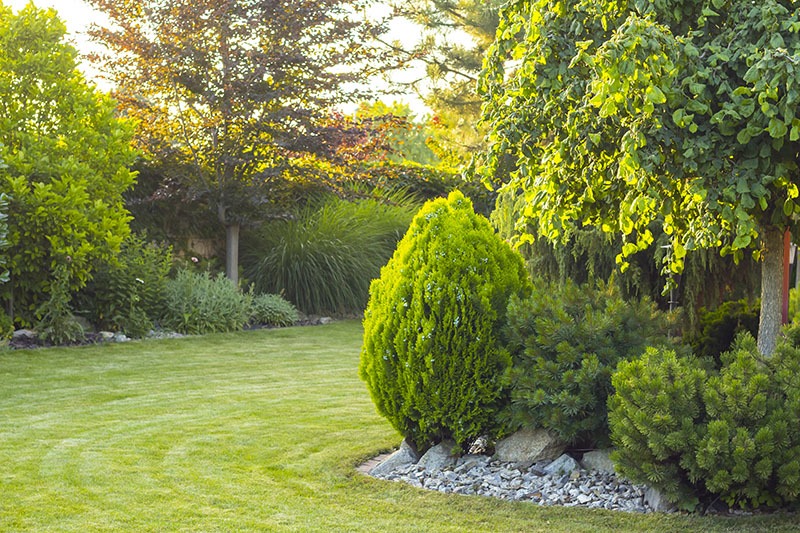
Image Source: Google
When it comes to the best landscaping trees are often the unsung heroes that can truly transform your outdoor space. Not only do trees provide shade and privacy, but they also bring beauty, texture, and a sense of tranquility to your landscape. In this article, we will explore the various ways in which trees can elevate your outdoor space and make it a more inviting and enjoyable environment for you and your family.
The Benefits of Trees in Your Landscape
Trees offer a wide range of benefits that can enhance both the aesthetics and functionality of your outdoor space. Here are some of the key advantages of incorporating trees into your landscape:
1. Shade and Cooling
- One of the most obvious benefits of trees is their ability to provide shade and cool down your outdoor area, making it more comfortable during hot summer days.
- Shade from trees can also help reduce your energy bills by lowering the need for air conditioning.
2. Privacy
- Trees can act as natural privacy screens, blocking unwanted views and creating a secluded retreat in your backyard.
- Strategically placed trees can help define your outdoor space and create intimate areas for relaxation and entertainment.
3. Beauty and Visual Interest
- Trees add a dynamic element to your landscape with their changing colors, textures, and shapes throughout the seasons.
- Flowering trees can bring bursts of color and fragrance to your outdoor space, enhancing its beauty and charm.
Choosing the Right Trees for Your Landscape
When selecting trees for your landscape, it is important to consider factors such as the climate, soil conditions, available space, and desired aesthetic. Here are some tips for choosing the right trees for your outdoor space:
1. Climate Compatibility
- Choose trees that are well-suited to your local climate to ensure they thrive and remain healthy in your landscape.
- Consider factors like temperature extremes, rainfall patterns, and humidity levels when selecting trees for your outdoor space.
2. Soil and Sunlight Requirements
- Understand the soil conditions and sunlight exposure in your landscape to choose trees that will flourish in these settings.
- Some trees prefer well-drained soil, while others can tolerate wet or compacted soils.
3. Size and Growth Habit
- Consider the mature size and growth habit of the trees you plant to ensure they fit well in your landscape without outgrowing their space.
- Avoid planting large trees too close to structures or power lines to prevent future issues.
Designing with Trees in Mind
Integrating trees into your landscape design can enhance the overall look and feel of your outdoor space. Here are some design tips for incorporating trees into your landscaping:
1. Create Focal Points
- Use trees as focal points in your landscape design to draw the eye and create visual interest.
- Consider planting a specimen tree with unique features or a distinctive shape to serve as a centerpiece in your outdoor space.
2. Frame Views
- Strategically place trees to frame views and create natural picture frames that highlight key elements in your landscape.
- Use trees to accentuate architectural features or focal points in your outdoor space.
3. Add Layers and Depth
- Plant trees of varying heights and sizes to create layers and add depth to your landscape design.
- Consider grouping trees of different textures, colors, and shapes to create a visually rich and dynamic outdoor environment.
Maintaining Your Trees for Longevity
To ensure that your trees continue to enhance your landscape for years to come, it is essential to provide proper care and maintenance. Here are some tips for maintaining the health and longevity of your trees:
1. Regular Watering
- Water newly planted trees regularly to help establish strong root systems and promote healthy growth.
- Monitor soil moisture levels and adjust watering frequency based on weather conditions and the needs of your trees.
2. Pruning and Trimming
- Prune your trees regularly to remove dead or diseased branches and promote healthy growth.
- Trimming trees can also help shape their growth and prevent overhanging branches from becoming a safety hazard.
3. Mulching and Fertilizing
- Apply a layer of mulch around the base of your trees to retain moisture, suppress weeds, and protect roots from temperature extremes.
- Consider fertilizing your trees to provide essential nutrients and promote vigorous growth and flowering.
Conclusion
Trees are not just functional elements in your landscape; they are vital contributors to the beauty, diversity, and sustainability of your outdoor space. By carefully selecting, designing, and maintaining trees in your landscape, you can create a visually stunning and inviting environment that reflects your personal style and enhances your quality of life. So, next time you plan a landscaping project, remember the transformative power of trees and consider how they can elevate your outdoor space from shade to beauty.